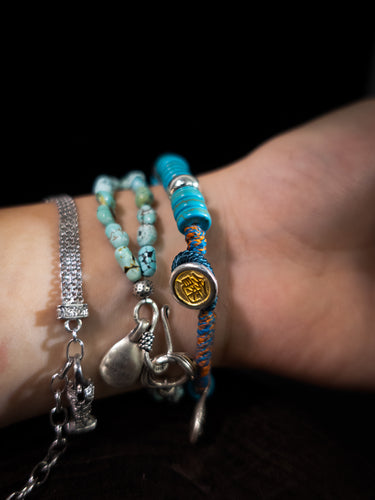
In the world of hospitality, creating a memorable and captivating ambiance is essential to provide guests with a unique and enriching experience. Hospitality with a twist, incorporating Chinese decor in hotels and restaurants, is an artful approach that transcends traditional design, immersing guests in an atmosphere rich with cultural heritage and aesthetic beauty. One way to achieve this is by incorporating Chinese decor into hotels and restaurants, infusing spaces with the timeless beauty and cultural richness of Oriental aesthetics. From elegant hotels to trendy eateries, the allure of Chinese-inspired design creates an atmosphere that is both sophisticated and welcoming. In this article, we delve into the fascinating world of Chinese decor in hospitality, exploring how it adds a twist of elegance and charm to hotels and restaurants.
Captivating Guests with Chinese-Inspired Design
Chinese decor is deeply rooted in the principles of balance and harmony. By incorporating these elements into the design of hotels and restaurants, establishments can create an atmosphere that appeals to guests on a visual and emotional level. The use of symmetrical layouts, calming color palettes, and thoughtful placement of furniture and accessories contribute to a sense of tranquility and balance. The interiors of hotels and restaurants can be embellished with furniture that echoes traditional Chinese designs - low tables, opium beds for lounging, and chairs with curved armrests. Silk cushions, wall hangings, and tapestries add a touch of luxury and comfort, while antique vases, porcelain, and sculptures lend an air of authenticity and elegance. Nature holds a significant place in Chinese culture, and its influence is often reflected in Chinese decor. Hotels and restaurants can bring the outdoors inside by incorporating natural elements such as bamboo, water features, and rock gardens. These elements not only add a touch of serenity but also connect guests with the beauty of the natural world. Chinese decor is rich in symbolism, and each element carries profound meaning. From the majestic dragon to the delicate lotus flower, every motif tells a story. Incorporating these symbols into the design of hotels and restaurants adds depth and intrigue to the space, inviting guests to explore and discover the hidden meanings behind the decor.
Creating Memorable Spaces
The entrance of a hotel or restaurant sets the tone for the entire guest experience. Chinese-inspired entranceways with ornate doors, intricate woodwork, and traditional red lanterns create a sense of anticipation and grandeur. The attention to detail in the design instantly captures guests' attention and transports them to a world of elegance and charm. Restaurants can elevate the dining experience by infusing Chinese decor into their interiors. Hotels can offer rooms and suites themed around different aspects of Chinese culture. For instance, a 'Forbidden City' suite could be decorated with imperial-style furnishings, while a ‘Silk Road’ room might feature patterns and art inspired by the ancient trade route. In restaurants, Chinese decor can enhance the dining experience by creating an authentic ambiance. Traditional Chinese dining settings with round tables, porcelain dishware, and tea sets, along with subtle background music featuring traditional Chinese instruments, can make dining a cultural experience. Richly adorned walls, exquisite silk curtains, and handcrafted furniture create an opulent atmosphere that immerses guests in a world of luxury. The use of traditional Chinese tableware and tea sets adds authenticity, allowing guests to savor not only the flavors but also the cultural heritage of the cuisine. Hotels can provide guests with a tranquil oasis by incorporating Chinese-inspired decor into their rooms and suites. Soft color schemes, tastefully arranged furniture, and subtle nods to Chinese culture create a serene and inviting space for guests to unwind and rejuvenate. The integration of traditional Chinese artwork and calligraphy adds an artistic touch, fostering a sense of appreciation for the beauty of classical Oriental art.
Use of Traditional Architectural Elements in Hotels and Restaurants
The use of traditional architectural elements in hotels and restaurants is an artistic endeavor that transcends mere construction; it is a cultural dialogue, a harmonious blend of history and modernity. This approach to design brings with it an aura of timeless elegance and a deep respect for heritage, particularly in settings that are influenced by oriental aesthetics. The infusion of these elements creates spaces not just of hospitality, but of immersive cultural experiences, where every arch, every carving, and every tile tells a story. In the realm of hotels and restaurants, the entrance sets the tone. Here, traditional elements like ornate wooden doors or stone archways often greet guests, their intricate designs hinting at the cultural journey that lies within. These entrances are more than mere passageways; they are gateways to a different time and place, adorned with motifs and symbols that have been cherished for centuries.As guests step inside, they are often embraced by a world where past and present coexist in harmony. In hotels, lobbies are graced with grand columns and beams, often inspired by ancient temples or palaces. These structures are not just supportive elements; they are meticulously crafted works of art, often carved with dragons, phoenixes, or floral patterns, each symbol rich in meaning and history. Restaurants, on the other hand, use these architectural elements to create an ambiance that enhances the dining experience. Ceilings may be adorned with intricate lattice work, reminiscent of traditional oriental screens, allowing light to dance across the room in a play of shadow and illumination. Walls might be lined with hand-painted tiles, each telling a fragment of a larger story, or with panels of rich, dark wood that speak of age-old forests. Furniture in these spaces is carefully selected for its historical resonance and aesthetic appeal. In restaurants, dining tables and chairs often reflect the style of a bygone era, their shapes and materials adding to the narrative of the space. Hotels might feature opulent lounges with low, ornate tables and plush cushions, inviting guests to recline in the manner of ancient nobility. The integration of natural elements is a hallmark of this approach to design. Courtyards or gardens, often found in the heart of hotels and restaurants, provide a serene oasis. These spaces are carefully landscaped with traditional elements such as koi ponds, rock gardens, or bonsai trees, each element carefully chosen to create a sense of peace and harmony with nature.
In conclusion, hospitality with a twist, using Chinese decor in hotels and restaurants, offers more than just a place to stay or dine; it provides an immersive cultural experience. This approach to design weaves together the richness of Chinese artistic traditions with modern hospitality, creating spaces that are not only visually stunning but also culturally enriching, allowing guests to embark on a journey through the beauty and history of China.Experience hospitality with a twist through the captivating allure of Chinese decor in hotels and restaurants. By embracing principles of balance, incorporating natural elements, and infusing spaces with symbolism and meaning, establishments can create memorable environments that captivate guests from the moment they step through the door. From grand entranceways to opulent dining areas and serene retreats, Chinese-inspired design adds a touch of elegance, charm, and cultural richness to the world of hospitality.





























